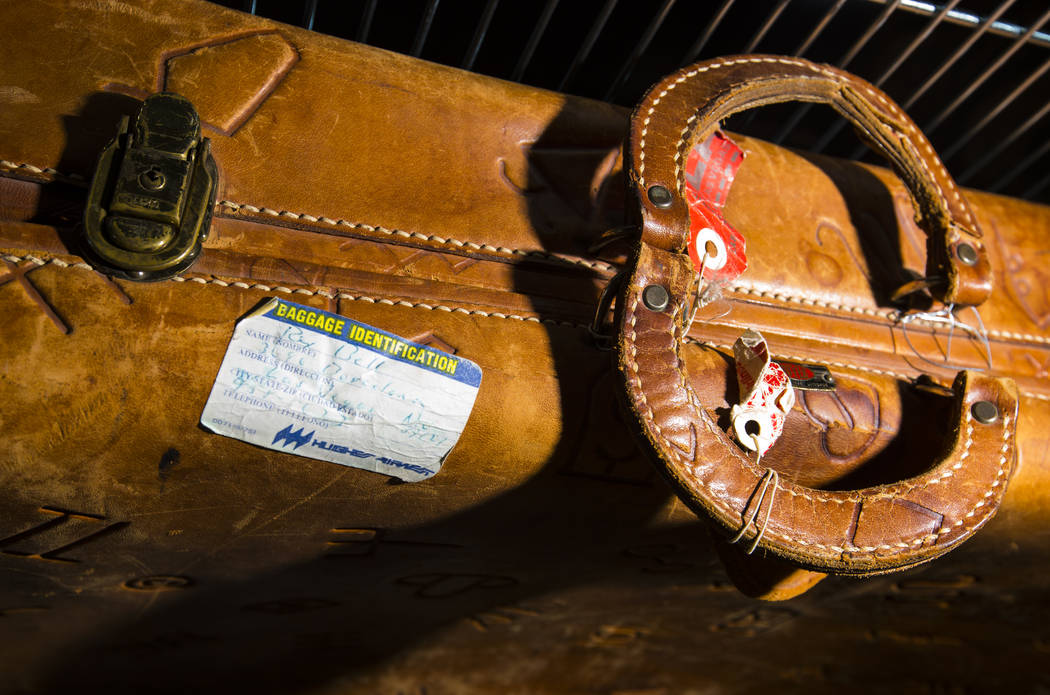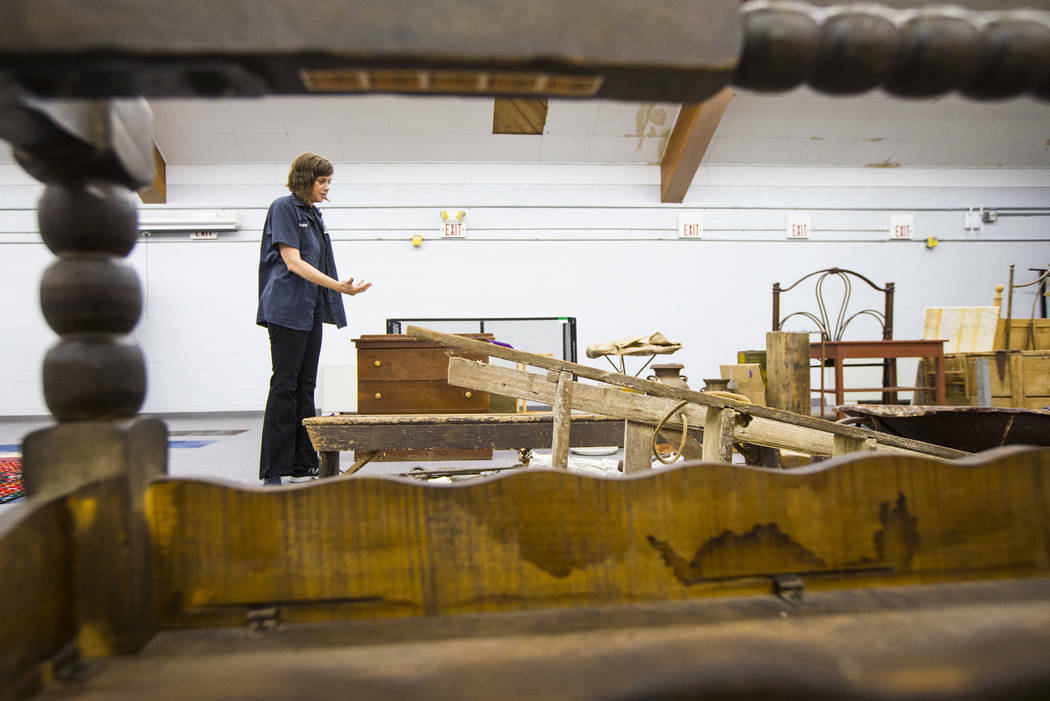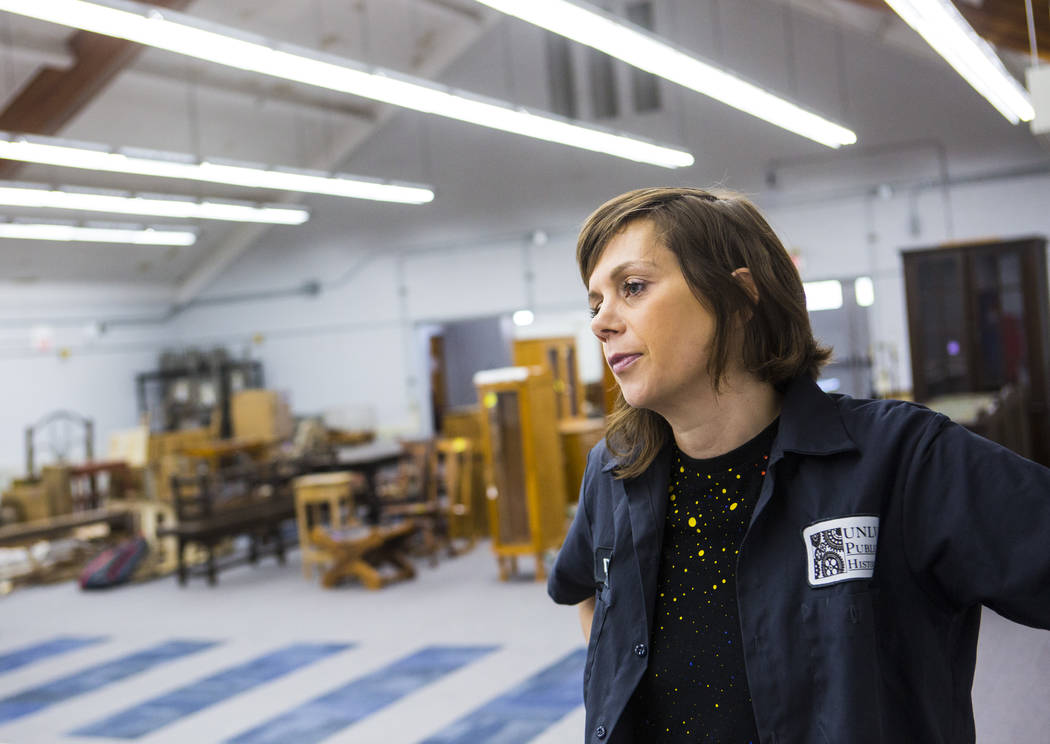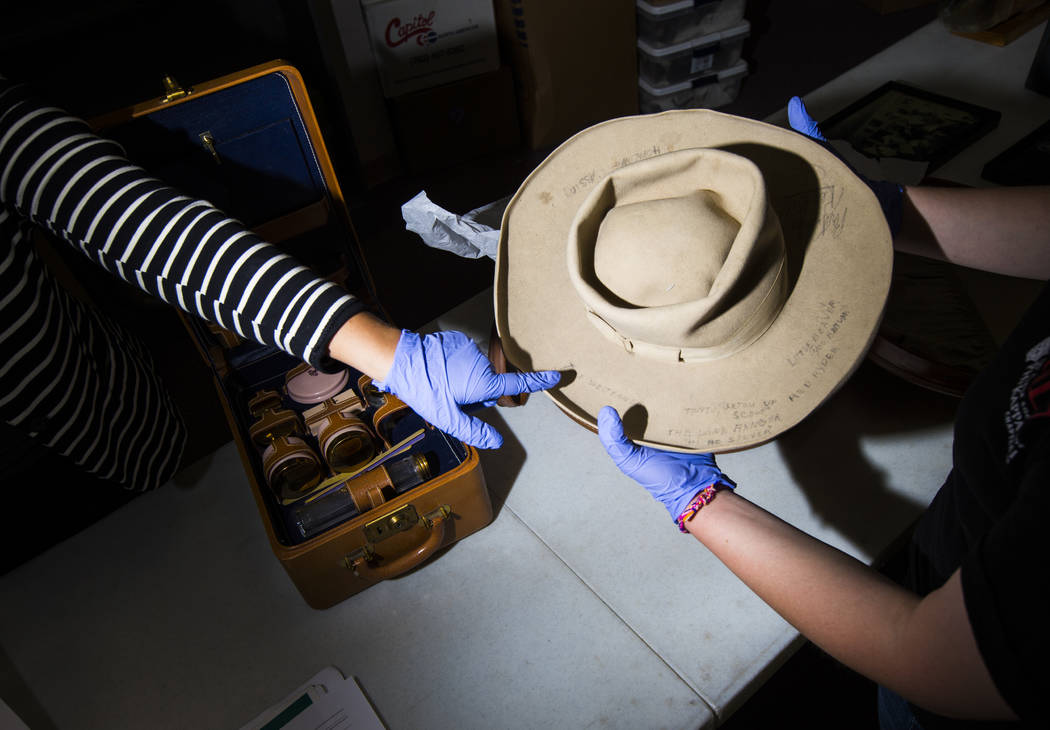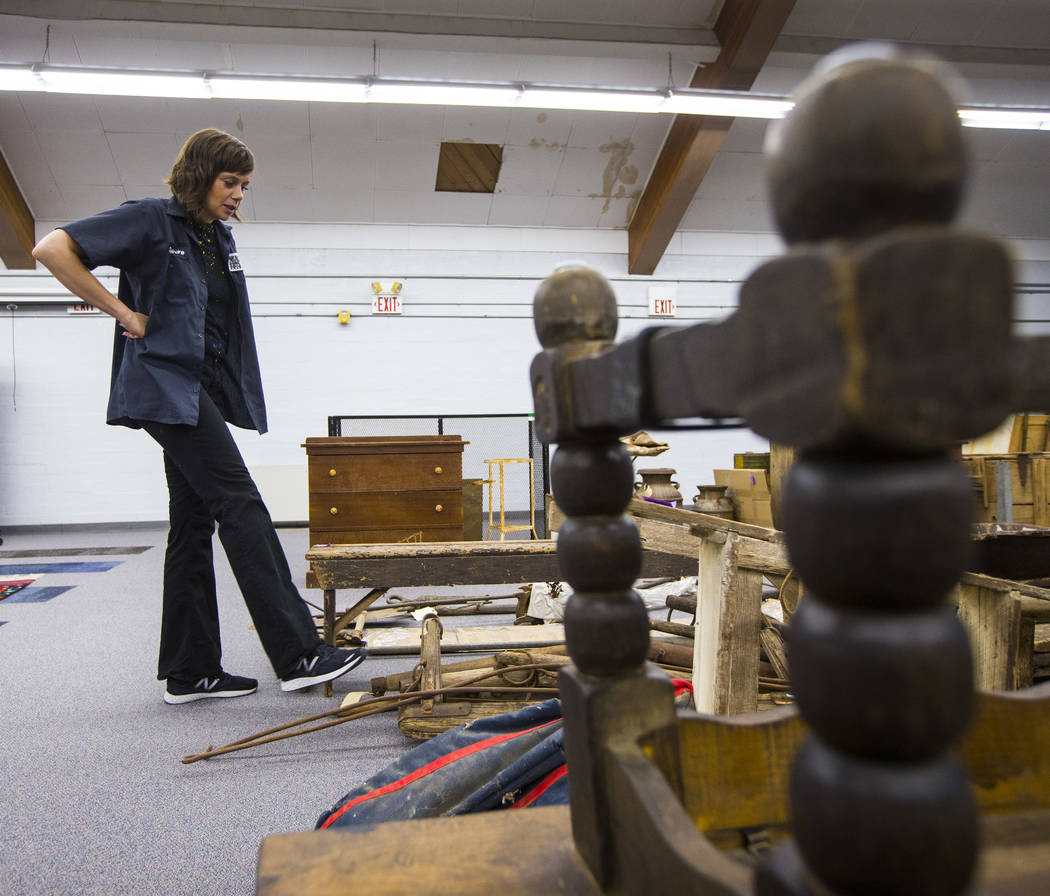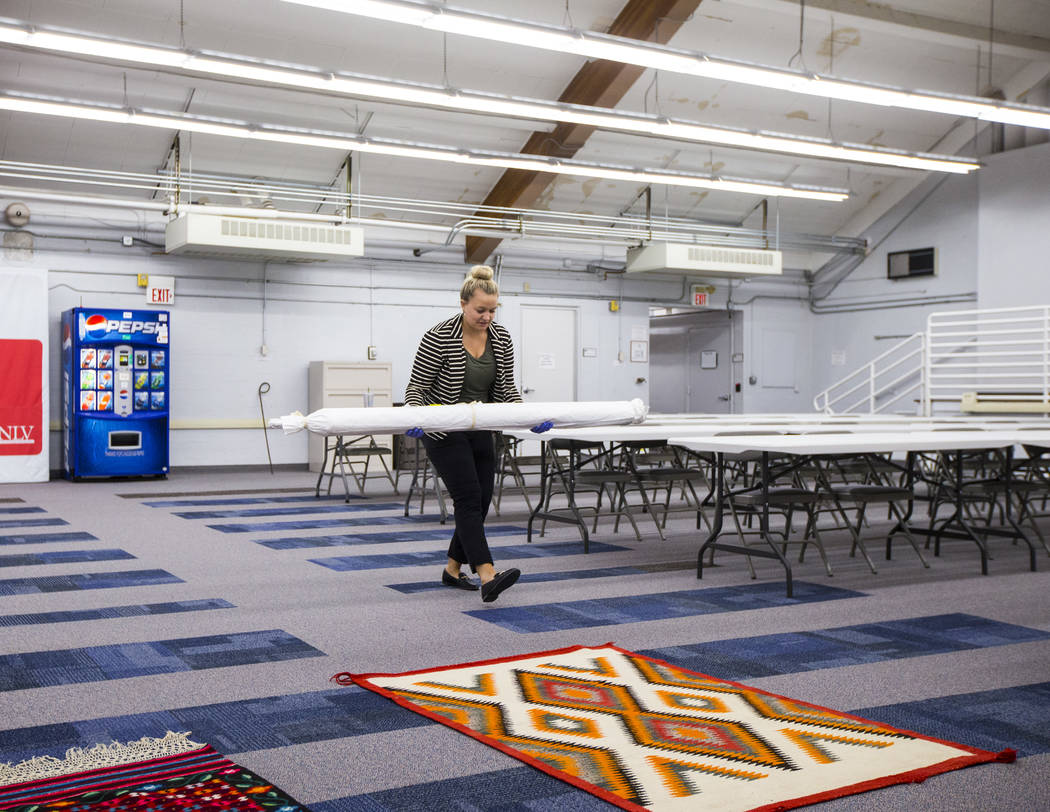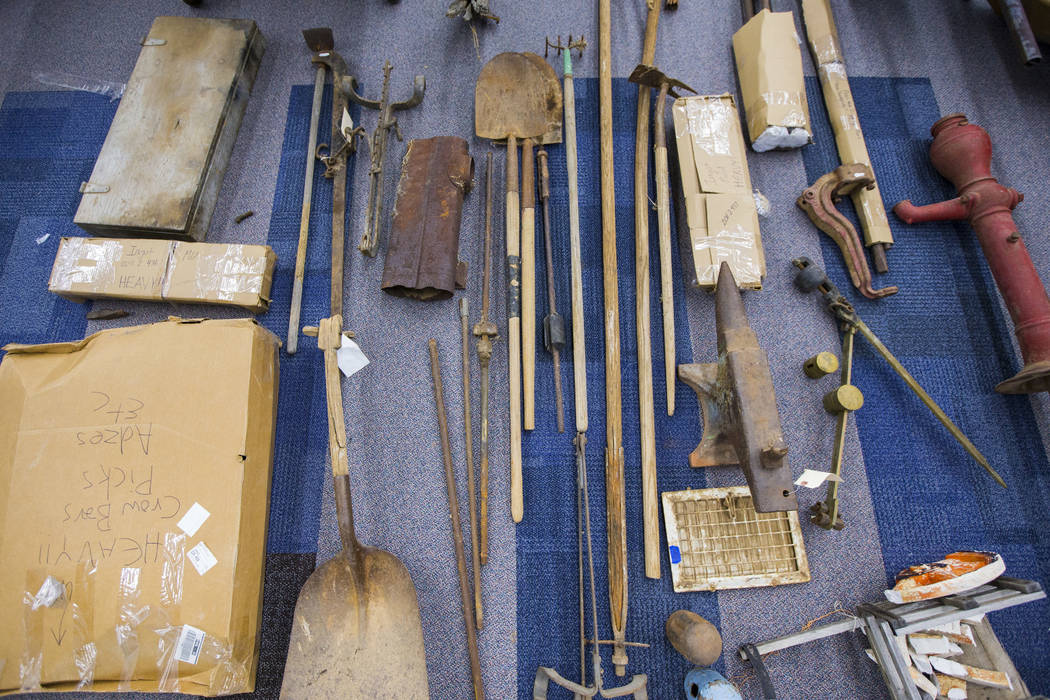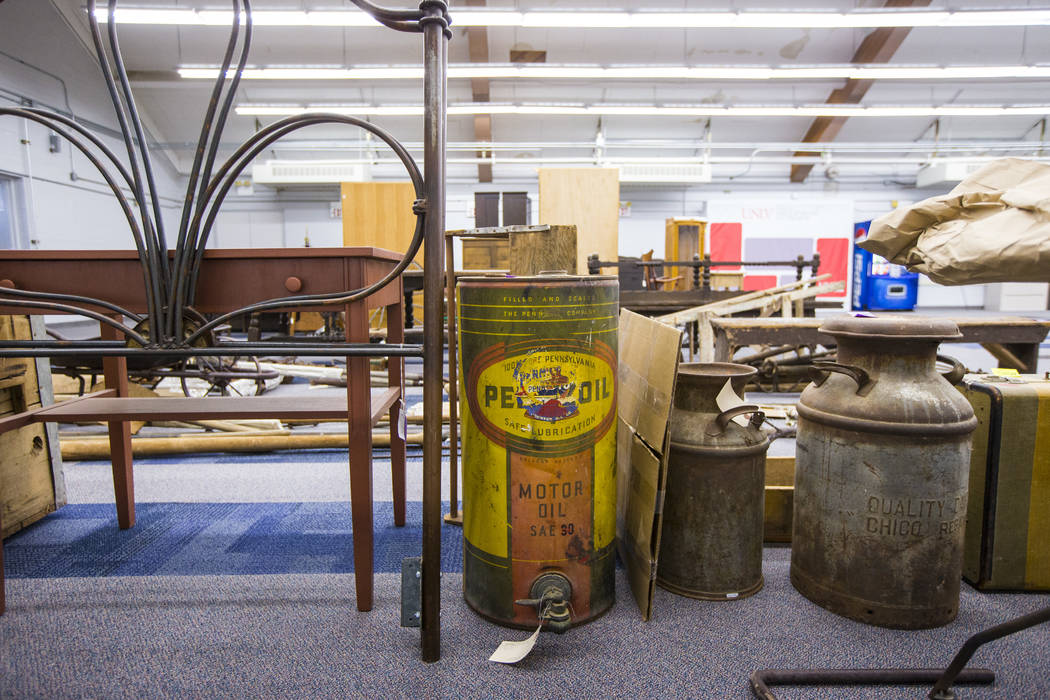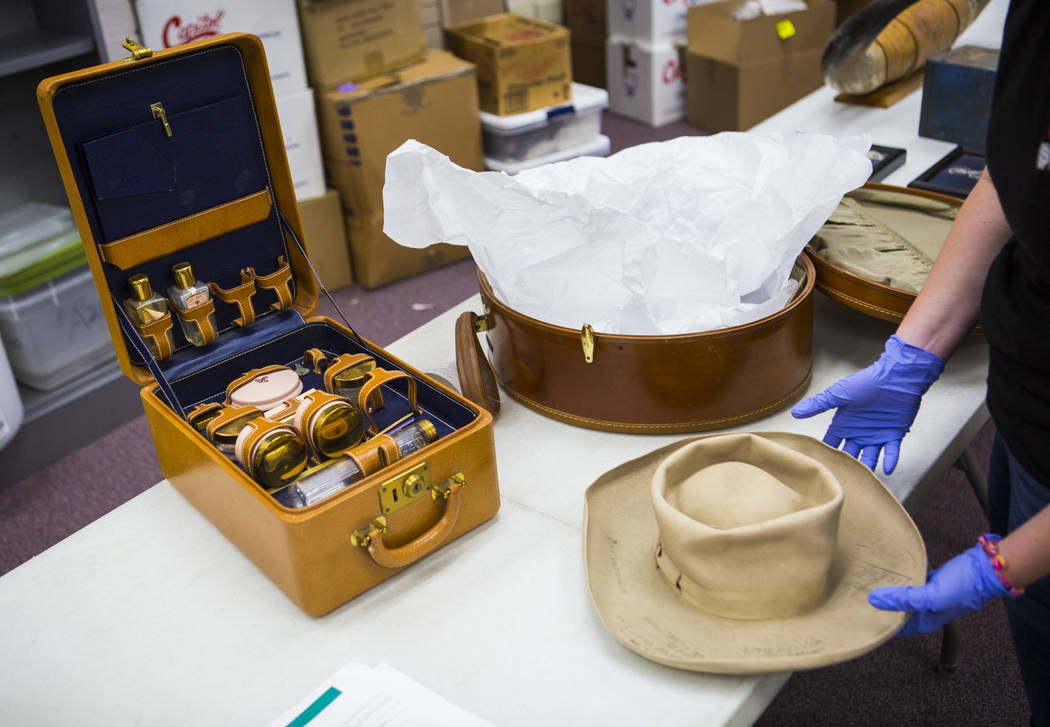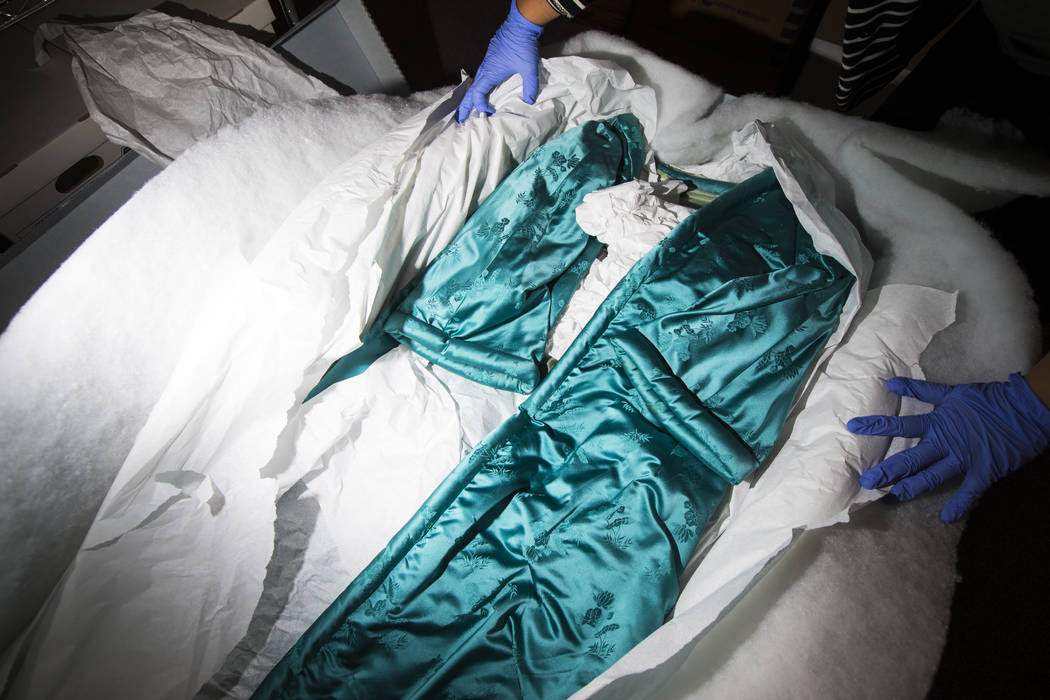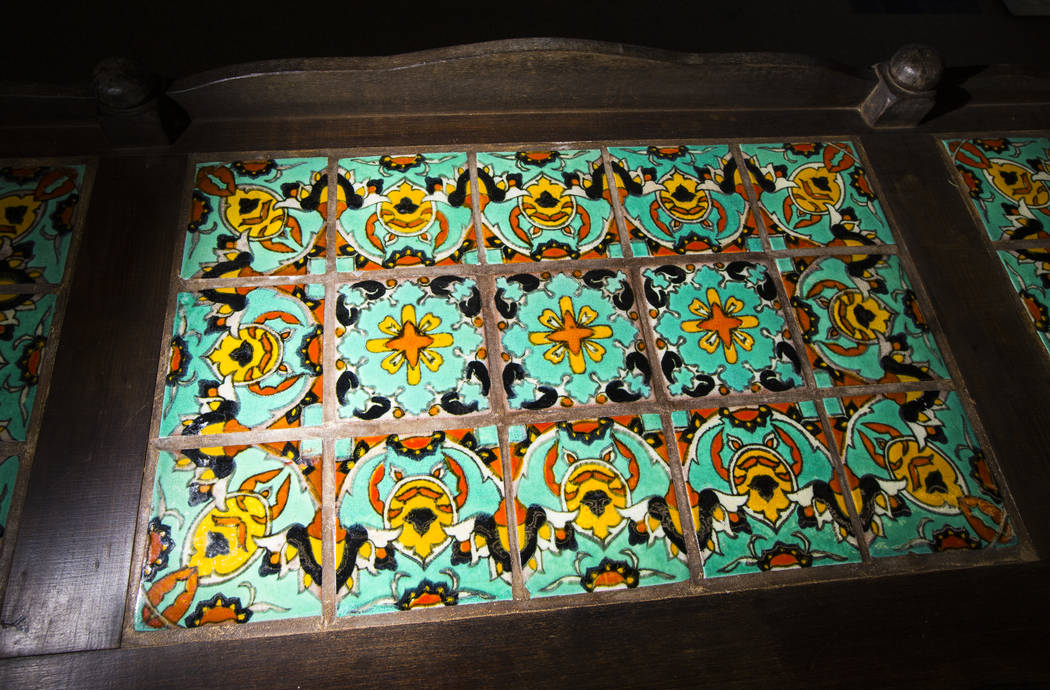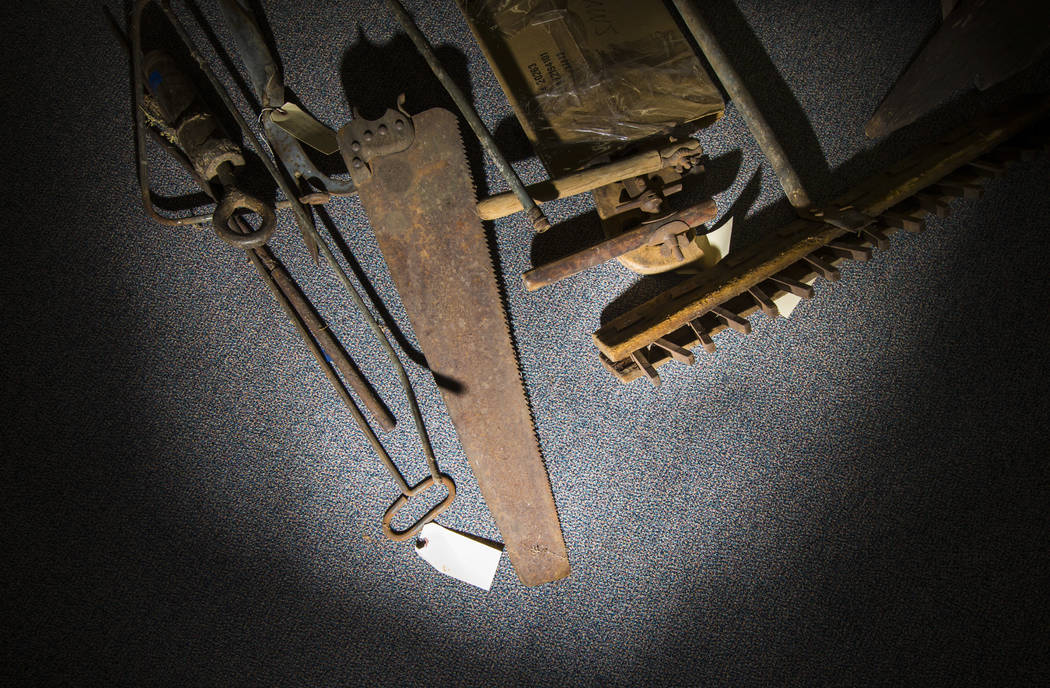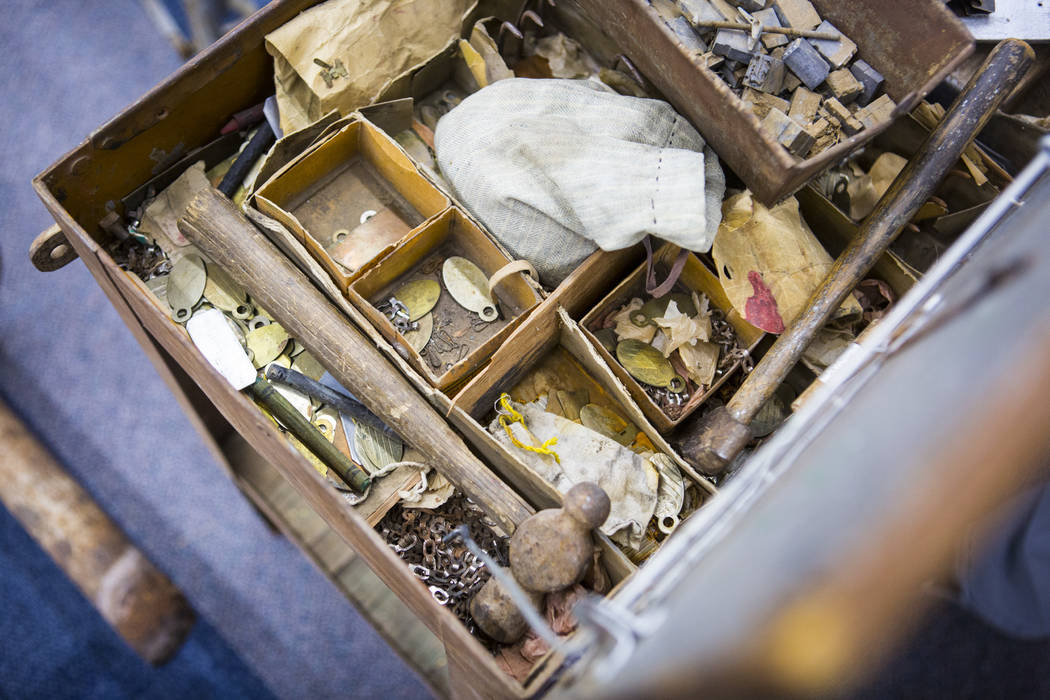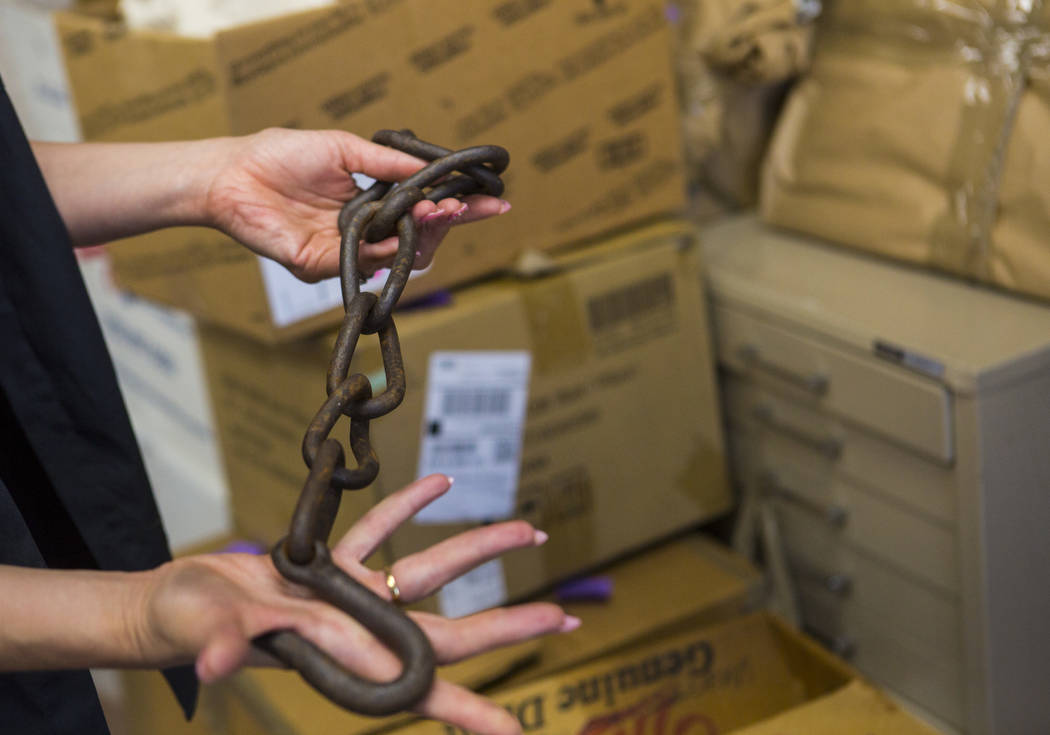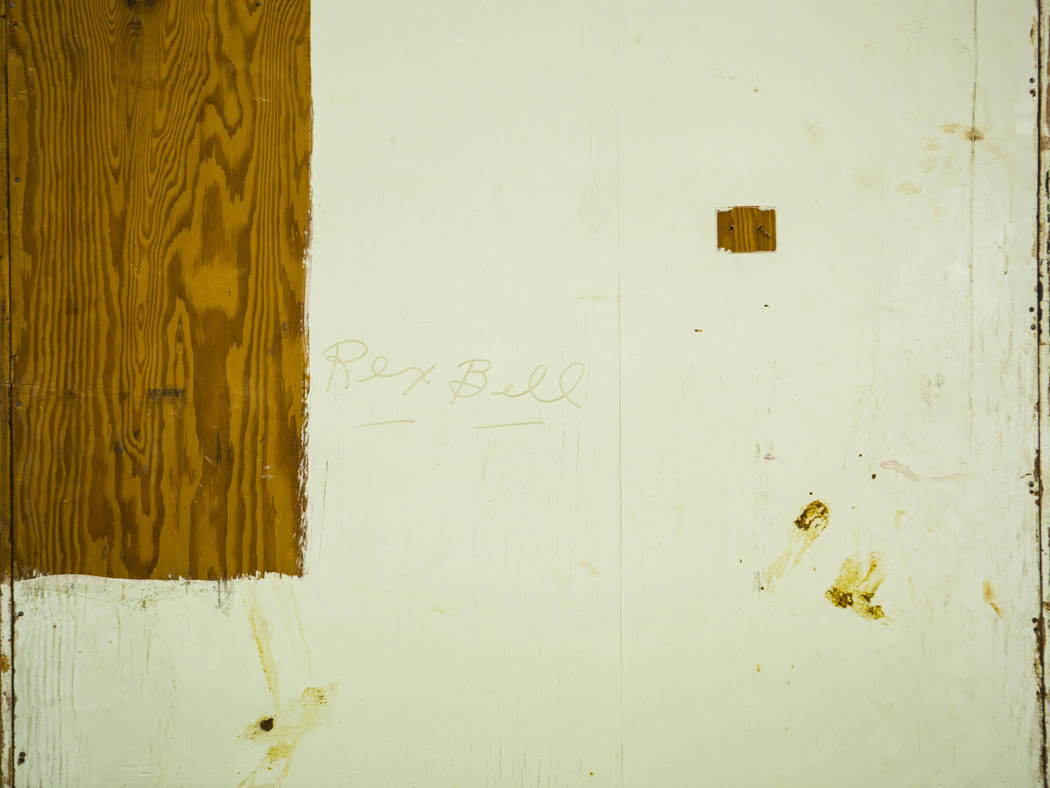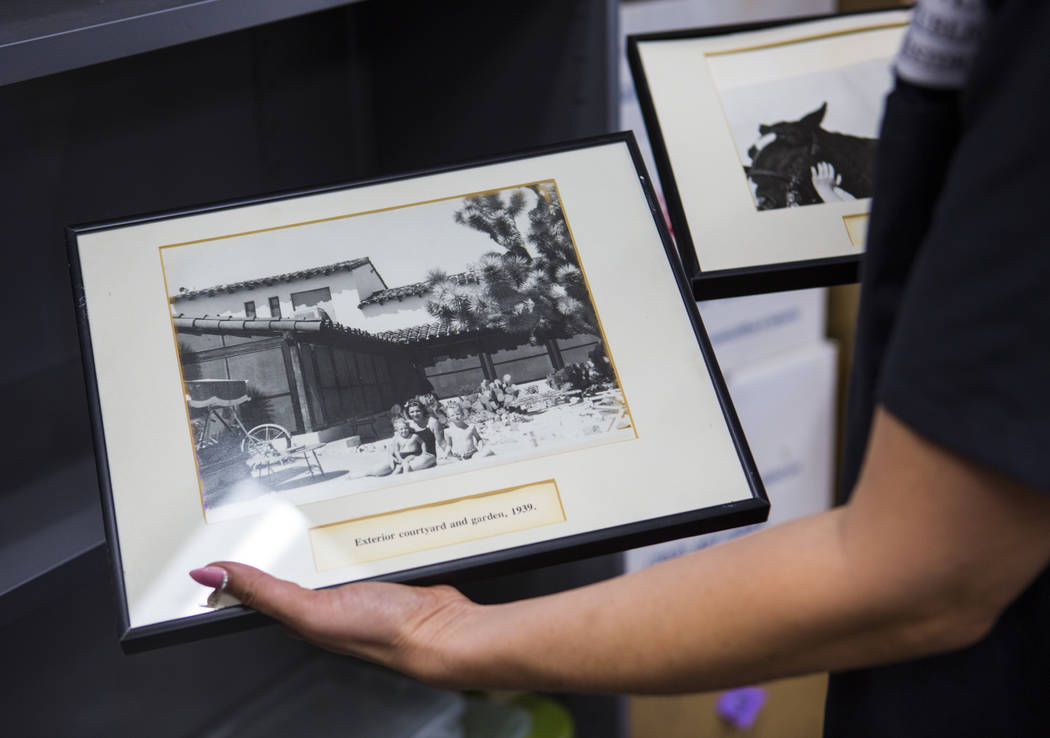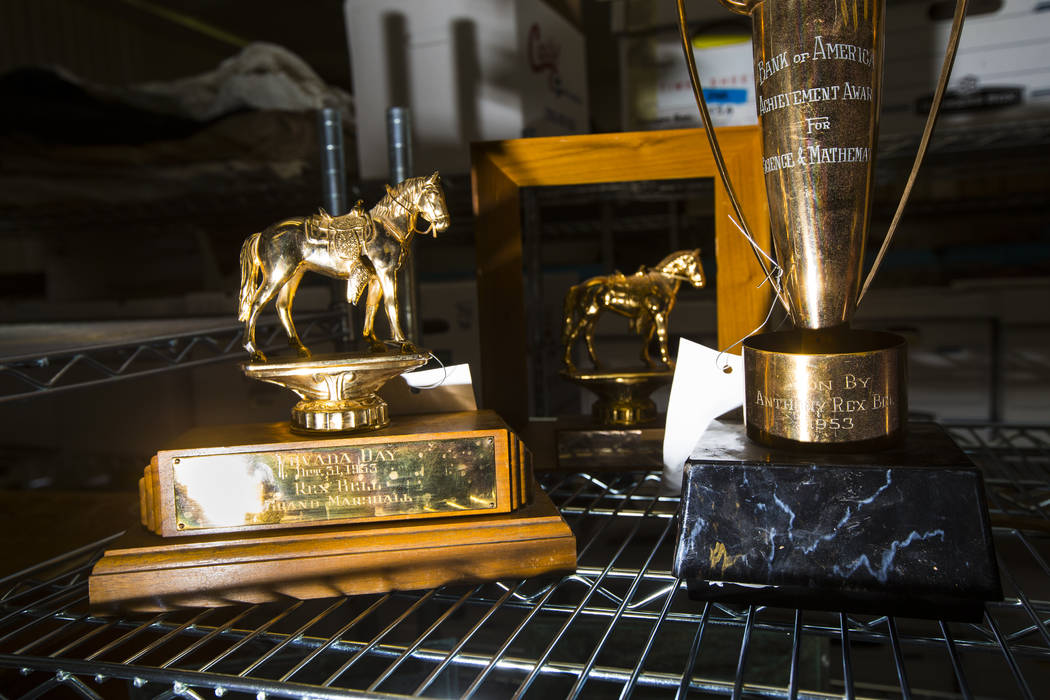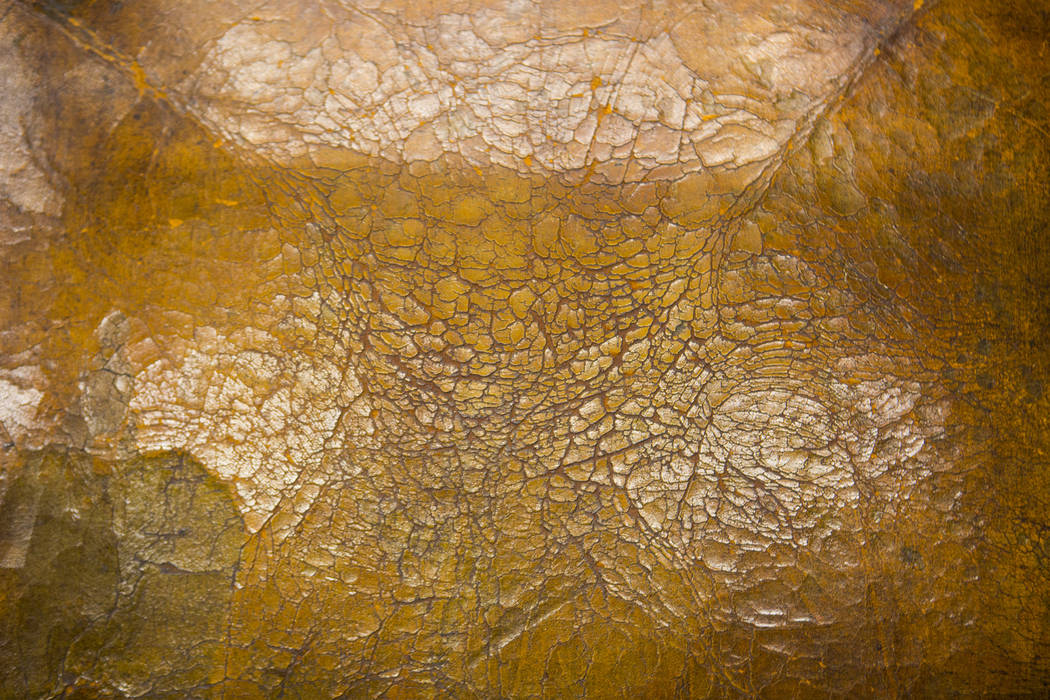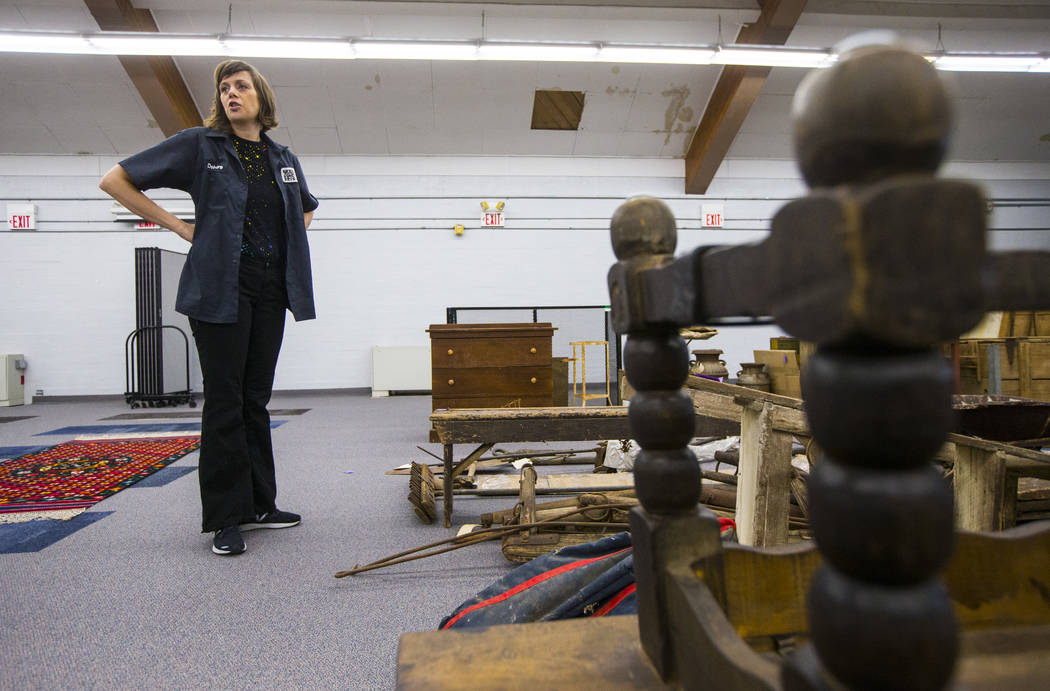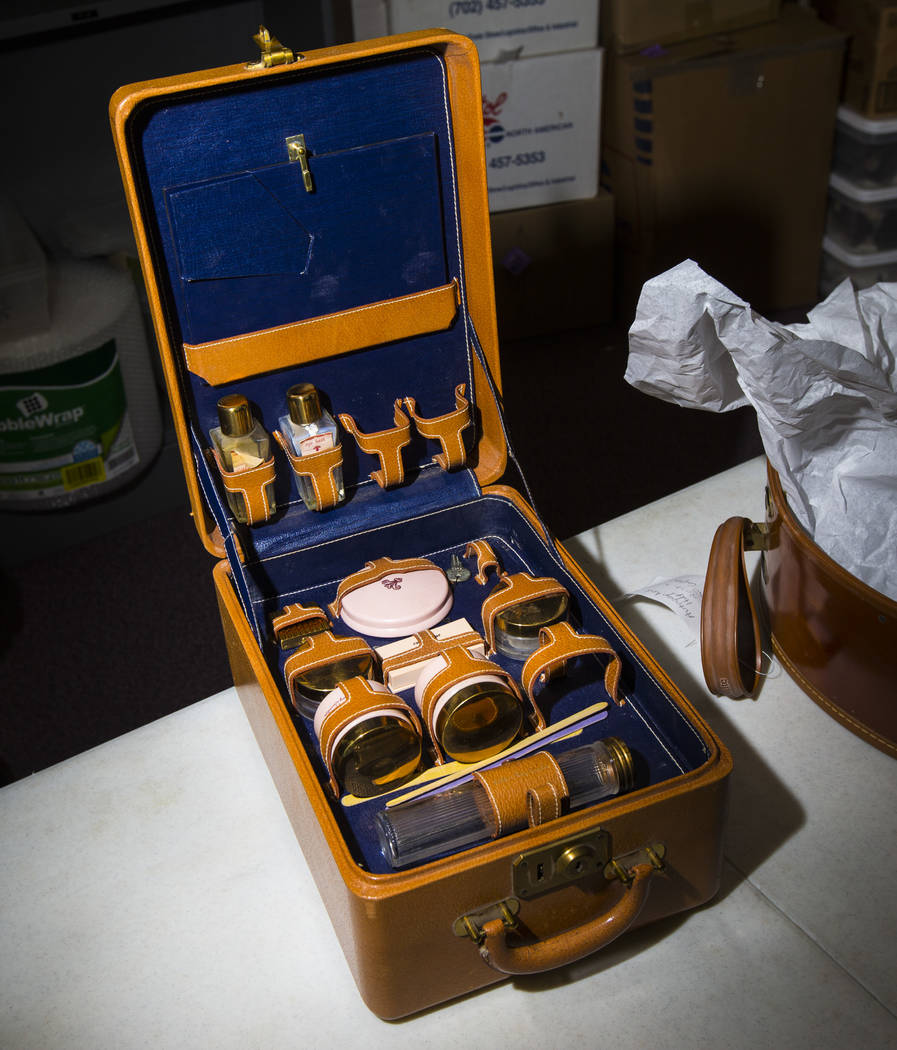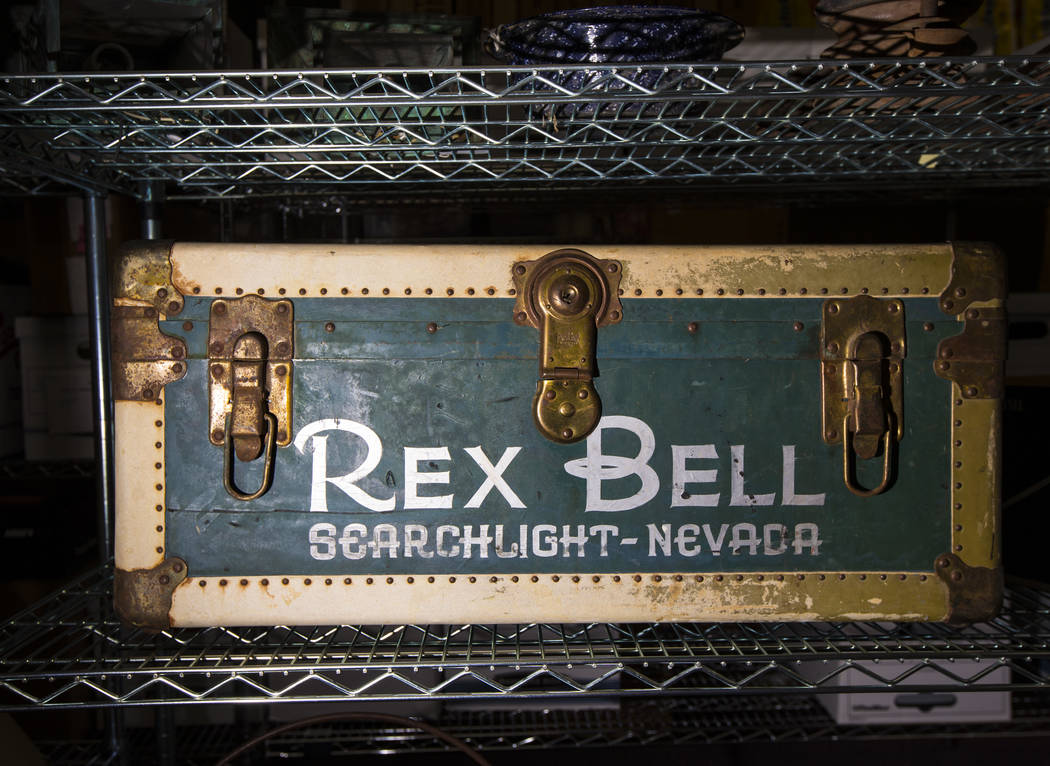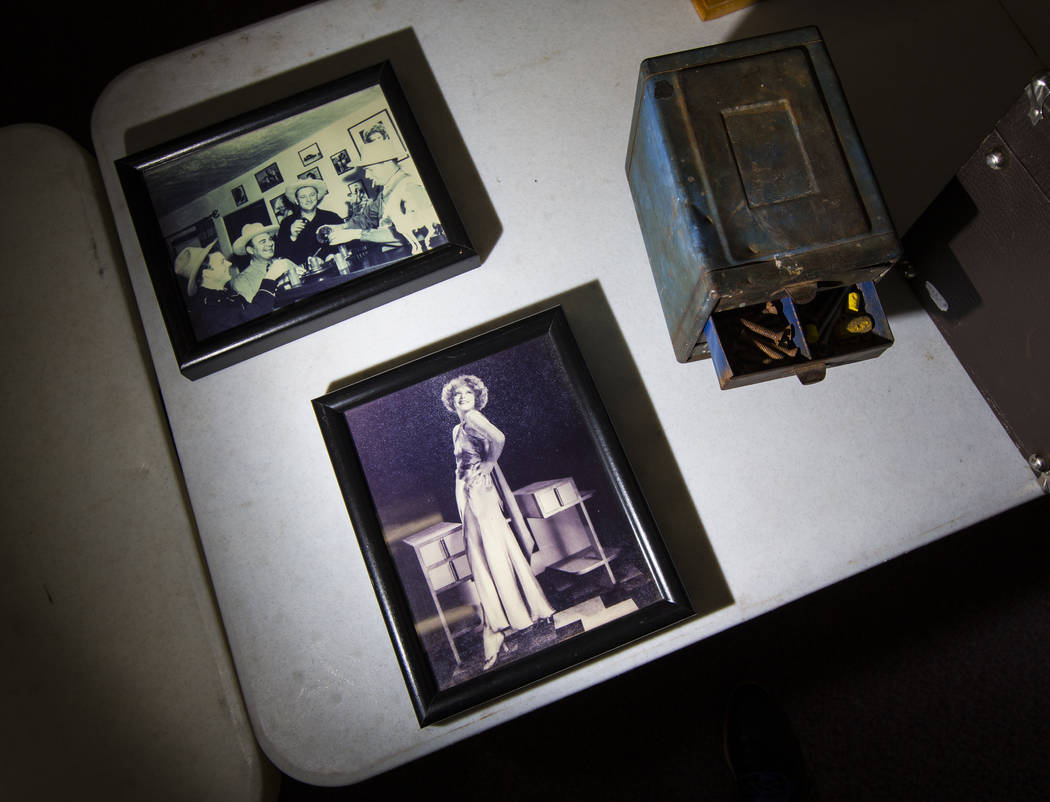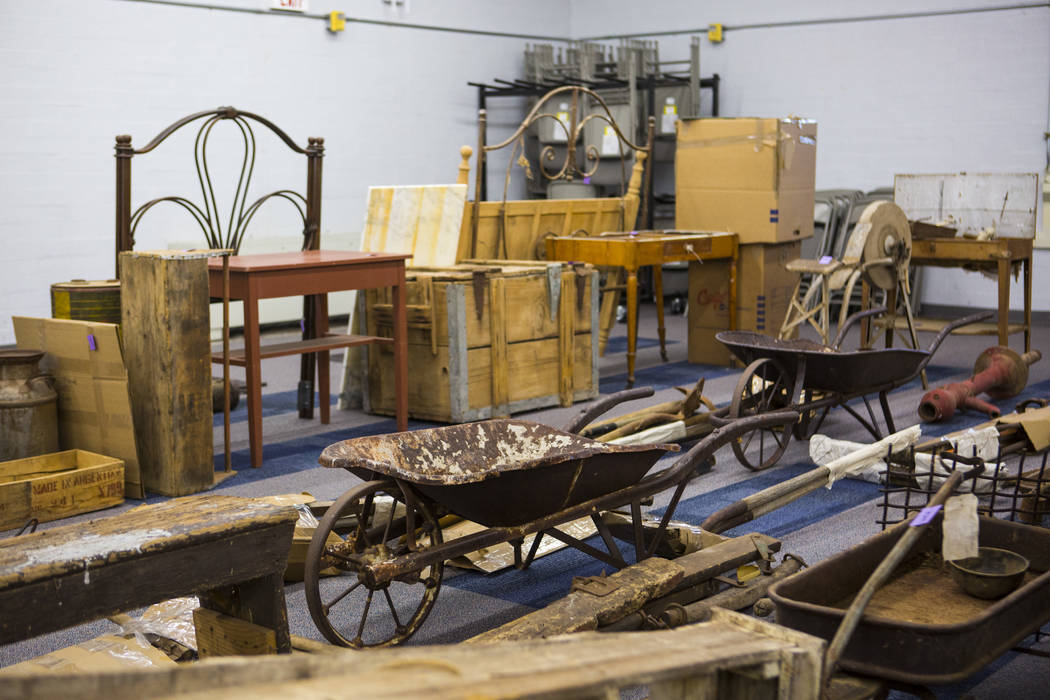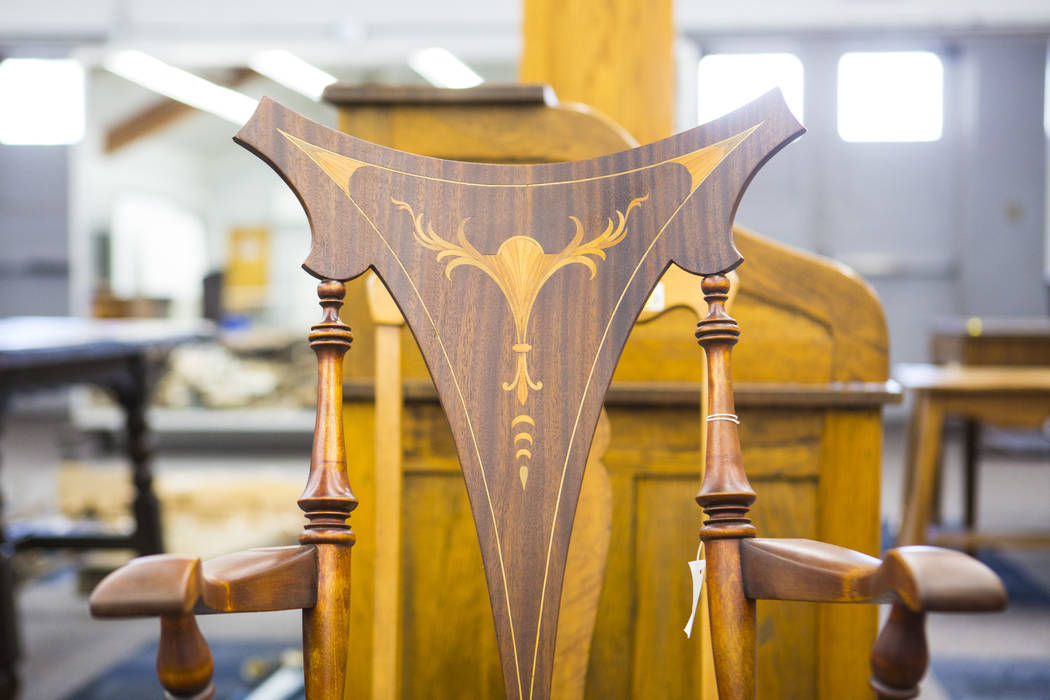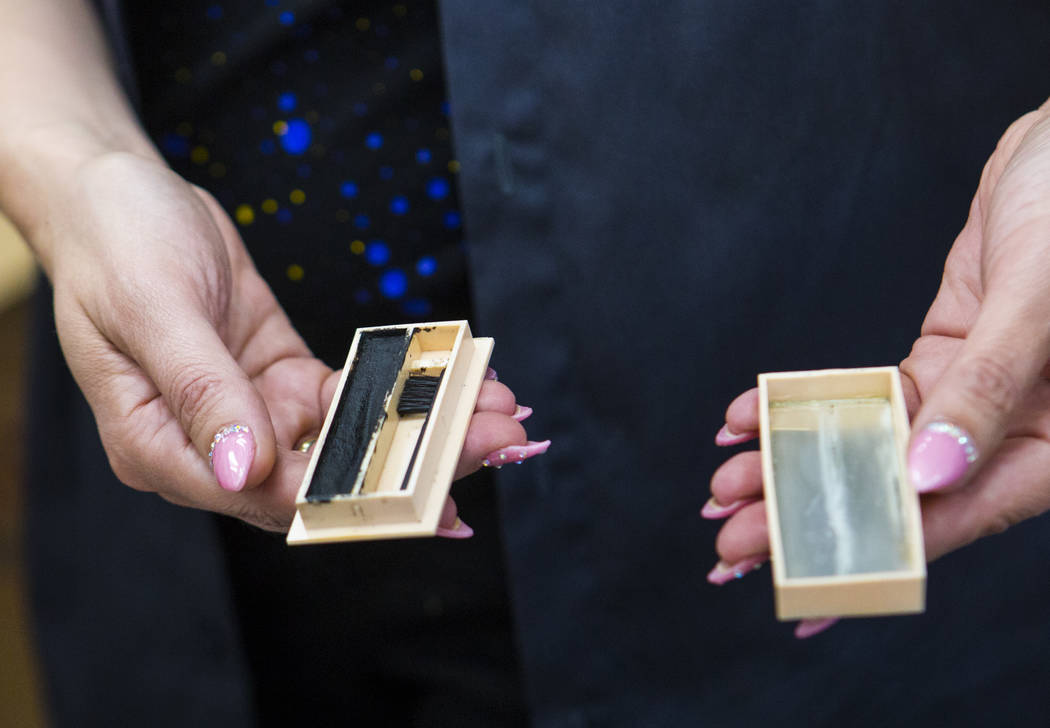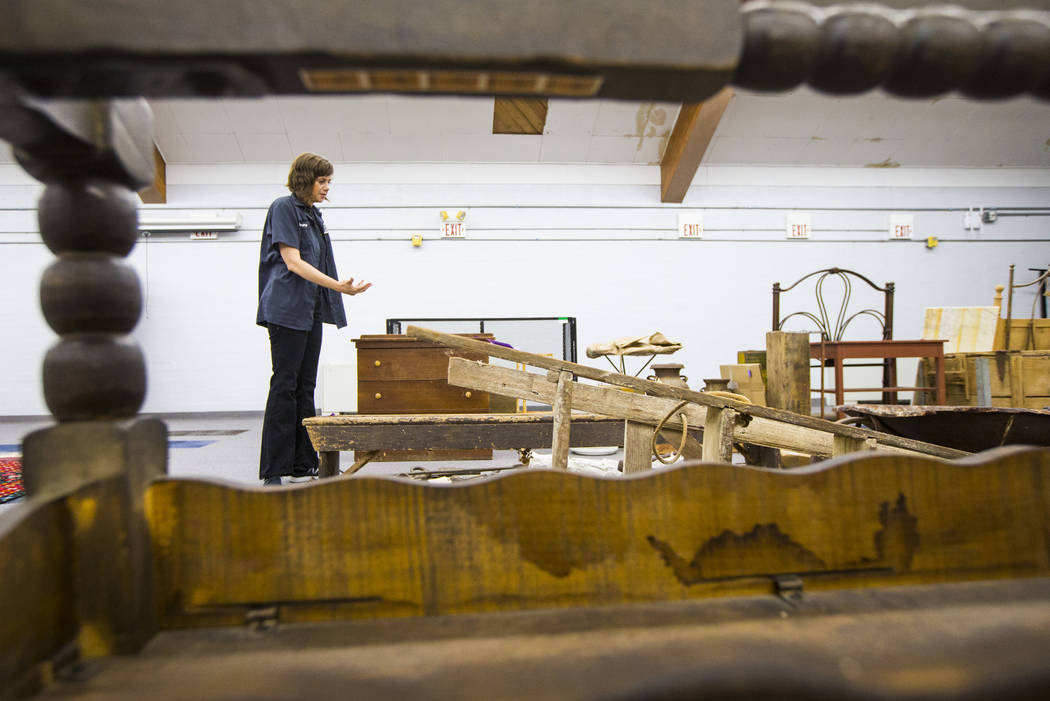UNLV ‘history detectives’ examine film stars’ artifacts
In a warehouse on the UNLV campus, graduate student Debbie Fleshman lifted the lid on a tan train case and stared down into silver screen history.
Against the case’s midnight blue lining, leather straps held neat rows of lotion jars, perfume bottles and compacts, some with makeup still inside. A gold clasp inside the lid secured a mirror that silent film star Clara Bow might once have used to apply her mascara.
Fleshman jotted down her observations on the lines of a form, logging the case’s contents and condition as she searched for details that might reveal its story.
She is one of a handful of UNLV students who are combing through a collection of artifacts from the Walking Box Ranch, a historic property just west of Searchlight where Bow and her film-star husband, Rex Bell, built their home away from Hollywood in the early 1930s.
The ranch, 65 miles south of Las Vegas, is now owned by the Bureau of Land Management. The former contents of its buildings are in the custody of UNLV.
History professor Deirdre Clemente said the collection has been in storage since 2013, when it was removed from the ranch to keep it safe during restoration work on several structures there.
She and her students began sorting through it about two weeks ago to figure out what they had and what should be done with it.
The collection contains about 2,000 objects in all, from rusty drill bits to large pieces of antique furniture.
“They have an incredible amount of historical value, and I think any culture-minded Nevadan would want to see them,” Clemente said.
Escape from L.A.
Bow and Bell were top box office draws when they bought the ranch in 1931. Over the next decade, their desert spread and 5,000-square-foot Spanish Revival home played host to such famous friends as Clark Gable, Carole Lombard, Errol Flynn and Lionel Barrymore.
They sold the property in 1950 to Karl Weikel, whose family ran cattle there for the next 40 years. Viceroy Gold Corp., owner of the nearby Castle Mountain Mine, bought the place in 1990 to use as a corporate retreat. The BLM acquired it in 2005.
“It was a working ranch, and you can really see that in the collection. You can really see what they were doing on the land,” Clemente said.
There is a branding iron, a snake hook and an old chuck wagon dinner bell. There are Western-themed chairs, tables and cabinets, including well-preserved pieces of Monterey furniture, a mission-influenced style popularized in California during the 1930s. The largest and most impressive of these is a dark-stained credenza with metal accents and a top decorated with brightly colored tiles.
“It’s probably going to bring tears to your eyes if you’re a furniture person,” Clemente said. “I’m a furniture person.”
UNLV also has Bell’s gun cabinet and some of the guns that went in it, though Clemente said the firearms are securely stored with the campus police department.
A table in the annex is stacked with several cowboy hats, one of them covered with what look like faded autographs from Bell and other Western stars.
A dark brown case holds an old projector that the couple used to show movies at the ranch house.
“We have his chaps. We have her kimono,” Clemente said.
Puzzling out the past
Much of the collection dates back to the couple’s tenure, though there are also what Clemente called “historically valuable” items brought in from other places when Viceroy was “Southwesterning up” its corporate retreat.
Late last month, about 10 UNLV students took part in a hands-on, three-day historic preservation workshop using the Walking Box collection.
Some of them stuck around after the workshop to continue sorting through the material and puzzling out its significance.
Sometimes they have a back story to go on. Often they have to piece the past together themselves.
“Unfortunately, in the museum field you don’t always get a lot of information,” said Paige Figanbaum, the UNLV doctoral student who led last month’s workshop.
For example, to determine the age of a wooden trunk decorated with Bell’s name and cattle brand, the students had to research the history of the manufacturers that made its locks and hinges.
“We start with Google,” Fleshman said.
She plans to use what she’s learning to get her master’s degree in public history and one day land a job as a curator.
“I’ve always loved museums since I was a little girl, so this is a dream for me,” she said.
UNLV senior and history major Kassidy Whetstone has a similar goal in mind.
“To me, I just like preserving these things and keeping them alive for people to see,” she said as she examined Bell’s autographed hat.
Return to the ranch
Clemente said another batch of students will start in on the collection when classes resume this fall. Their work will help decide the fate of the artifacts. Some will be kept and possibly returned to the ranch some day. Some will be loaned out for exhibit at the Nevada State Museum or elsewhere. Some will go back into storage.
As for the Walking Box Ranch itself, BLM spokesman John Asselin said the house and garage have been restored, and a dedicated parking area and some interpretive panels have been added to the ranch.
The bureau now has a permanent manager in place for the property and is working to establish a “friends group” to serve as volunteer stewards, Asselin said in an email.
“We had some volunteer-led tours in past months, and we’d like to continue something like that in the future but don’t have any scheduled at this time,” he said.
Ultimately, Clemente hopes UNLV and the BLM can team up somehow to make Walking Box more accessible to Nevada residents and history buffs.
She doesn’t know what that partnership might look like, but she said the cultural historian in her would love to see the ranch decorated once again with furniture and other items from the collection.
“These objects have such a powerful meaning in their original context,” Clemente said. “Here, a dirty pitchfork is just a dirty pitchfork. In the context of the ranch, it tells a story of labor and who used it.”
Contact Henry Brean at hbrean@reviewjournal.com or 702-383-0350. Follow @RefriedBrean on Twitter.
Fame beyond film
Rex Bell was a famous big screen cowboy when he and wife, silent film legend Clara Bow, traded Hollywood for the Walking Box Ranch outside Searchlight in 1931.
But Bell also found fame in Nevada politics.
He ran unsuccessfully for Congress in 1944, then headed up the state Republican Party before being elected lieutenant governor in 1954 and 1958. He died in office while campaigning for governor in 1962.
His son, Rex Bell Jr., also made a name for himself. After growing up on the ranch, Bell Jr. became a lawyer and eventually served as a Las Vegas justice of the peace and Clark County District Attorney. He died in 2011 at the age of 76.
Related
UNLV public history students get education at Rex Bell's ranch (2011)




